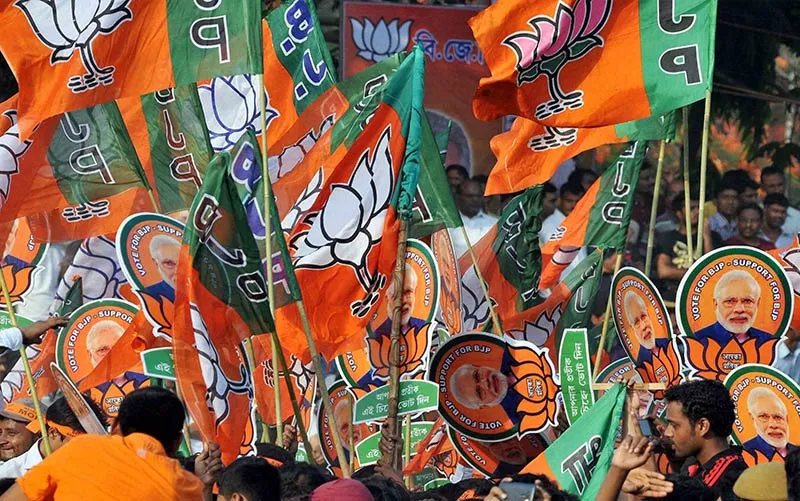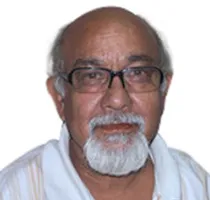-
CENTRES
Progammes & Centres
Location
It is difficult to predict whether cow politics will bring electoral gains to BJP and its allies in the five assembly elections early next year.

When on two successive days earlier this month, Prime Minister Narendra Modi broke his silence on the menace of cow vigilantism in the country, it surprised his camp followers while seasoned political observers understood reasons behind his outburst.
On August 6, during an interaction called ‘Town Hall Meeting”, the Prime Minister condemned the acts of violence by these vigilante groups and called them “anti-socials” masquerading as “gau rakhshaks.” On August 7, the PM went a step further while speaking in Hyderabad. He asked these groups to stop attacks on Dalits, saying “If you want to shoot, shoot me.”
While these cow vigilante groups have been violating the law of the land and committing acts of violence against Muslims and Dalits for over a year, neither the Prime Minister nor any of the BJP leader had categorically either distanced from such acts or had condemned them.
As a matter of fact, Modi, during his election campaign in the 2014 general elections, had made cow protection a major issue. He had attacked the then ruling Congress party for ushering in a ‘pink revolution’ in the country based on cow slaughter. He had again raised the issue in during the election campaign in Bihar in October 2015 and the BJP had taken out media advertisements on the eve of the polling to woo voters to back the party if they wanted to save cows from slaughter.
But now that the issue seems to be hurting the political and electoral interest of the BJP, the Prime Minister as well as the Rashtriya Swyamsevak Sangh (RSS) seem to have decided to distance from the issue. This is because violent attacks on Dalits also meant loss of votes. However, though Muslims were also affected, they were omitted by the Prime Minister, the BJP as well as the RSS.
Cow politics or rather strategic use of cow for furthering political interests has been tried in the past several times, but ironically, now its first victim, possibly unintended, was Gujarat Chief Minister Anandiben Patel who was forced to step down in the wake of a Dalit agitation that spread across the State after four Dalit men were publically flogged with iron rods on July 11 in Una town for allegedly killing a cow they were skinning.
The Una incident was not an isolated one. Media has been reporting the acts of cow vigilante groups for quite some time now. In the name of protecting the cow, Gau Rakashak Samitis (Cow Protecting Committees) have sprung up in many parts of the country, particularly in the Hindi speaking States.
The news of thrashing of Dalits and Muslims has been received from different States in the last one year, including the latest one from Lucknow, the capital of Uttar Pradesh. Dalits in Lucknow, who skin dead cows for living, have refused to lift carcasses after vigilantes thrashed two of their community members on the suspicion of cow slaughter on July 28.
The violence against two Muslim women in Mandsaur, Madhya Pradesh, on July 27 highlights the issue of cow vigilantism and right wing extremism. The women were allegedly carrying 30 kilograms of meat which, after primary testing, was confirmed to be that of buffalo. Since bringing buffalo meat in Madhya Pradesh without permission is illegal, the two women were taken into custody.
Surprisingly, no action was taken against those who had attacked these women at the Mandsaur Railway station, even though vigilantes were seen beating, punching and slapping the women in the videos recorded by the passersby. A BJP MLA, Yashpal Sisodia, called these women criminals and said “it was a reaction to an action.”
In yet another incident in January this year, a Muslim couple, among others, was assaulted by seven members of a Gau Raksha Samiti at the Khirkiya railway station of Madhya Pradesh over the suspicion of carrying beef.
Earlier in July, two men were forced to eat a mixture of cow dung, cow urine, milk, curd and ghee in Haryana over the suspicion of transporting beef. In a video, a group of men were seen sitting on the road trying to force the cow dung mixture down the throat of two hapless men, with the help of water while they puked. The Gau Rakshaks were also heard asking the men to shout ‘Bharat Mata ki jai’ and ‘Jai Shri Ram.’
Perhaps, the most sordid and gory of all cow vigilante incidents took place last year in a village called Bisada (Uttar Pradesh), close to the national capital of New Delhi when a Muslim named Mohammad Akhlaq was lynched to death by a mob after dragging him out of his home in front of his family. The mob had attacked Akhlaq’s house reportedly after an announcement had been made from a temple nearby that one of the villagers had killed a cow and was storing its meat in the house.
It is but natural to ask as why there is a sudden increase of crimes related to cow. The BJP, the RSS and its affiliated outfits had made no secret of making cow protection as part of its political armour.
In 1966, Hindu organisations, including the RSS, had agitated to demand a ban on cow slaughter in the country as enshrined in the Directive Principles of State Policy in the Constitution. The agitation had culminated in a massive demonstration outside the Parliament building on November 7, 1966. The agitators had tried to storm the parliament, but were prevented. The mobs rampaged through the national capital and a 48 hour curfew was imposed. Then Prime Minister Indira Gandhi, however, refused to accept the demand.
Since then, the RSS and the BJP, which declared them to be the sole representatives of Hindus, have been preparing the ground but they allowed the issue to gain traction in different States, particularly after the Modi government came to power in May 2014.
The Sangh parivar is trying to use cow to sharpen the Hindu-Muslim divide by projecting that Muslims eat beef and they are the ones who kill the holy animal while overlooking some obvious facts like Dalits skin a dead cow and from birth till death of a cow, there is full economic cycle.
Making cow slaughter an election issue garnered votes for the BJP in the general elections. Though the strategy paid rich electoral dividends to the BJP, the process encouraged cow vigilante groups and they began to take law into their own hands.
This has led to random acts of violence by cow vigilante groups which have been mushrooming in various parts of the country. Acts of violence and even murder have been reported from Gujarat, Madhya Pradesh, Haryana, Uttar Pradesh (UP) and other Hindi speaking States.
The Sangh parivar tried this strategy of using the issue of cow protection and converting it into a Hindu-Muslim divide in the Bihar Assembly elections last year, but it failed to help the party electorally. Yet the defeat has not made the saffron camp any wiser.
The politically most important State of Uttar Pradesh is facing elections next year. And the BJP, in close consultation with the RSS, is keen to make cow protection a big issue. But right now, this strategy seems to be backfiring as Dalits, after the Una incident and the abuses hurled by UP BJP vice president Daya Shankar Singh on BSP leader and four time State Chief Minister Mayawati, have begun to unite against the saffron party. Not only that. Now Muslims and Dalit have begun to come closer following the cow politics while the strategy was meant to divide Hindus and Muslims so that Hindu voters could be polarised behind the BJP.
However, whether cow politics will bring electoral gains in the five assembly elections early next year cannot be predicted now. Neither it cannot be said if the issue will be played up aggressively, following its fallout.
But one thing is clear. The handling of the issue for petty political benefits has surely weakened the social structures and has created structural fault lines in society which may not be easy to rectify.
The views expressed above belong to the author(s). ORF research and analyses now available on Telegram! Click here to access our curated content — blogs, longforms and interviews.

Satish Misra was Senior Fellow at ORF. He has been a journalist for many years. He has a PhD in International Affairs from Humboldt University ...
Read More +